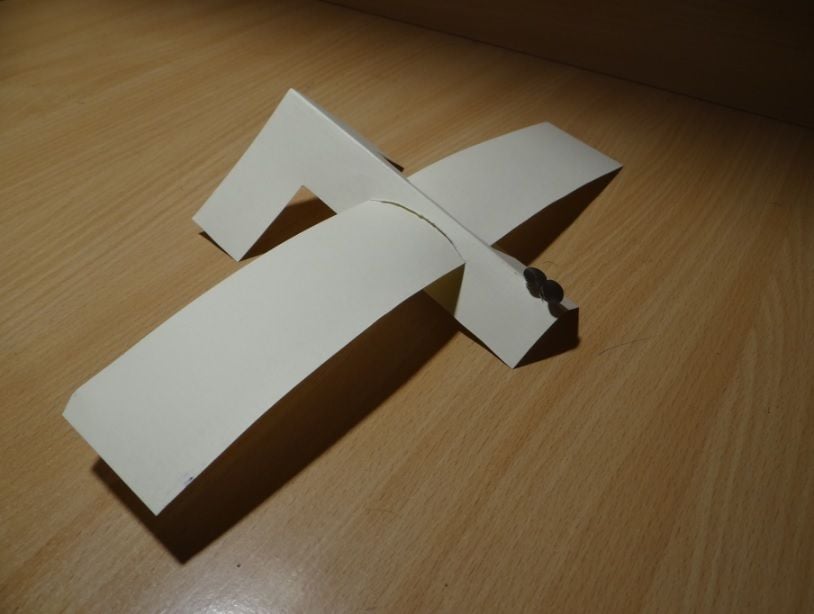Odoaker sent me a picture of the glider to go with the description above.

Will it fly? Most certainly. But is it perfect? far from it.
First off from a roll stability point of view the downturned wings will be de-stabilizing and the model will fall off into a turn to either side and not want to recover. You should insert the curved wings so the curve is upwards. That way it'll recover to level flight if disturbed from straight ahead. Or if launched with some bank it will try to recover.
With the very short tail the balance point for stable flight will need to be relatively farther forward. And that means the wing is working harder than it would if the tail moment was longer. But when using paper or the card stock that seems to be the case here you're limited on how long you can make it without becoming too easily tweaked. Perhaps if you had a longer flap that closed over the lower open side to form a triangle shape for the portion that forms the fuselage then you could make the tail section longer. And with some shaping you could make the nose a little more pointed and close it with a rounded end.
The inverted V shape is good for flying but not so good for staying adjusted when the model drags the tail surfaces each time it lands. It might be worth turning the fuselage over so the tails stick up and don't suffer from becoming bent during landings. Perhaps not quite as good aerodynamically but the practical operation advantage would be worth the slight, if any, aerodynamic cost.
The curve at the flat middle portion of the wings will aid the efficiency in flight. But you are losing that advantage out in the tips where the curved anhedral (or dihedral when you flip the wing over) turns the section back to a flat section. So you get a situation where the center section might be flying but the outer sections might be stalled. It might be better to work with a flat "V" dihedral and use a couple of glued or taped in ribs to hold the airfoil section all the way out.
In terms of pitch stability the fact that it sounds like you can hold it pointed straight down, let it go and it still pitches up and flies away suggest to me that the model is TOO stable in pitch. Obviously for a free flight model we want some pitch stability. But from an efficiency standpoint it hurts the glide distance and duration when there's too much pitch stability. When I trim a small free flight glider I set it up so that if I push it out into a roughly 20° nose high stall that occurs at around 7 ft or 2M high that it will recover and not hit the ground. But that recovery should use most of the height available. As be within 12 inches/30cm of the ground as it swoops through the bottom of the recovery arc. That's what I expect from stuff that is up to around 20 inch/50cm span. If you adjust your glider by removing some nose weight and angle the tails to restore the stable glide and then push it up into this sort of stall and watch for that sort of flight path I think you'll find that the model can be set up to fly slower and perhaps even travel for a longer distance.